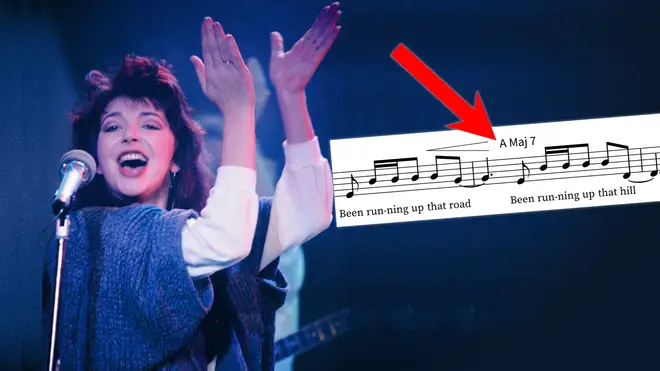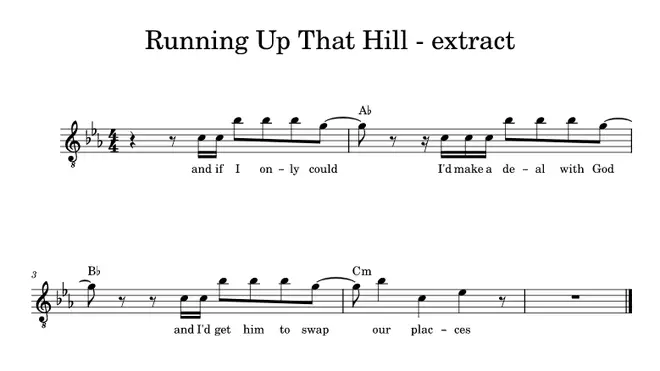On Air Now
Classic FM Breakfast with Dan Walker 6:30am - 9am
22 June 2022, 17:11 | Updated: 22 June 2022, 17:40

What’s the music theory behind the Kate Bush classic that the whole world is talking about? We dive into the themes, melody and harmony of this enduring masterpiece of pop.
There’s an outstanding harmonic sequence at the very top of the UK pop charts right now, and we’d like to explain why.
This week ‘Running Up That Hill (A Deal with God)’ by Kate Bush topped the charts, 37 years after it was first released. The renewed fever for the August 1985 hit comes from its prominence in the Netflix sci-fi series Stranger Things.
There’s a quality array of classical music in the new season – Verdi, Tchaikovsky and Bach all sit alongside Bush in Stranger Things Season 4.
Anything that can top the charts 37 years after release indicates some considerable musical magic.
Read more: Epic Kate Bush cover turns ‘Running Up That Hill’ into a virtuosic piano fantasia
Bush wrote and produced ‘Running Up that Hill’ for her 1985 album Hounds of Love. The instrumentation consists of guitar, bass, drums, a Russian string instrument called a balalaika, and an epic array of 1980s synthesisers, played by Bush herself.

Kate Bush - Running Up That Hill - Official Music Video
‘Running Up that Hill’ explores the idea of making a deal with God in order to swap lives with another person and fully understand their emotions and experiences.
Bush talked about the theme of the song in 1985. She explained how it’s about a relationship between a man and a woman. Though they are in love, they are experiencing emotional differences and insecurities.
“If they could make a deal with God, to change places, that they’d understand what it’s like to be the other person and perhaps it would clear up misunderstandings,” Bush said.
The song’s mood is passionate and pleading. There’s uncertainty and a longing for that emotional resolution – Bush does some very interesting things harmonically that also bring these themes into the music for the listener.
We’re in C minor – the classic key of Beethoven angst – and a slightly unusual key for a pop song. There’s a driving drum beat from the beginning, which almost feels like a drone. Those glorious 80s synths (Fairlight CMIs) ring out short, descending phrases with a minor key feel. This is the song’s hook: B♭, G, C.
The song has two verses and the chorus, that is preceded by a pre-chorus section. At the climax of the song, you hear a bridge, before three repetitions of the chorus and an outro or coda section.
The vocal line is based on the C natural minor scale, which gives the melodies a modal, slightly bluesy feel. Bush’s vocal lines often focus on the B♭, or the minor seventh of the scale. To a listener’s ear, a minor seventh note always feels it’s leading somewhere, about to resolve. This brings a lingering harmonic tension and instability within the driving C minor of the bass and synths.
Bush’s vocals in the verses are quite declamatory, almost like a sung spoken word or recitative. The pre-chorus sections are then contrasting: the words ‘you, you and me’ feature melismatic singing (this is when a phrase where many notes is sung to the vowel of one word). Bush’s vocals don’t employ much of a dynamic range in this song, so this contrast in word-setting really stands out.
Tension, instability, subtle contrasts – a listener might feel these aspects of the harmony and melody support the themes of the song we were talking about earlier.

Pianist performs amazing cover of Kate Bush's Running Up That Hill
When we hit the chorus, this is where (we think) the absolute magic happens.
Over the chord sequence A♭, B♭ and C minor Bush sings the lyric ‘And if I only could; I’d make a deal with God; And I’d get him to swap our places.’ This is an unusual chord progression for a chorus, and really highlights the minor-feel to the song.
But we just love how Bush’s vocal line adds even more. On the word ‘could’, Bush lands on a G, or the major seventh of A♭ major. This is a note of real tension. This dissonance is accented further by the longer length of the note (what is called an agogic accent), and the slight rhythmic anticipation of it.
Take a look and listen below...

We then have that slightly unusual B♭ chord and then the tonic or home chord of C minor. And even when C minor hits, Bush is holding us in suspense singing an B♭ note – that pesky 7th that’s so full of harmonic colour and tension. Almost pleading for resolution.
We think that the way voice and harmony combine to outline a A♭ major 7, B♭ and C minor 7 is magical.
And again, this harmony has tension, movement and uncertainty. Just like what is felt by the two people the song is about. We reckon it’s pretty genius. What a song.
And you don’t need to take our word for it, or worry too much about our very casual music theory ruminations – just take a look at the pop charts today. The world does agree.